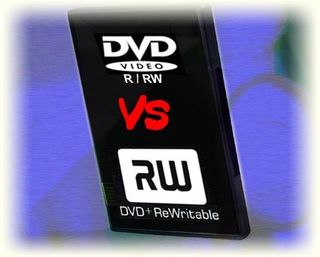DVD Burner Test: Seven Times The Capacity
Introduction

CD burners can now run at the mind-blowing speed of 52X. An 80-minute CD-R takes under three minutes to burn and a CD-RW no more than five. The technology has reached its zenith and no manufacturer can take it any further without a considerable outlay in research and development to gain a just handful of seconds. Speed is obviously no longer the main requirement, what users want is more storage space. And this is where the DVD comes in!
Seven Times The Capacity
Though the CD created a storage revolution in its time, it has now become commonplace. Its 640 MB capacity has become a bit limiting, so much so that most makers only offer 80-minute blank CD-Rs with 700 MB. So the DVD is the answer to the big storage requirements that hard disks of 60, 80 or 120 GB now entail. DVDs have a nominal capacity of 4.7 GB, so in practice you can record just a bit under 4.5 GB.
Such high capacity also implies new applications. While the CD was intended mainly for music with very little video, the DVD is really designed for digital video and multi-channel sound. Since it hit the market a few years ago, the public has always known it to be ideal for video, so it is now quite natural for it to be presented as the storage medium for home movies that are usually filmed with digital camcorders. But in addition to video, there are now a lot more audio DVDs around. These provide sound with a better sampling rate, so the quality is higher and sounds much more like the original. DVD audio can also reproduce multi-channel music tracks.
We ran tests on the following six DVD burners:
- Philips DVDRW228(DVD+R/ RW)
- Pioneer DVR-A05 (DVD-R/ RW)
- Ricoh MP5125A (DVD+R/ RW)
- Sony DRU120A (DVD+R/ RW)
- TEAC DV-W50E (DVD-R/ RW)
- Sony DRU-500A (DVD-R/ RW and DVD+R/ RW)
Stay on the Cutting Edge
Join the experts who read Tom's Hardware for the inside track on enthusiast PC tech news — and have for over 25 years. We'll send breaking news and in-depth reviews of CPUs, GPUs, AI, maker hardware and more straight to your inbox.
Most Popular

